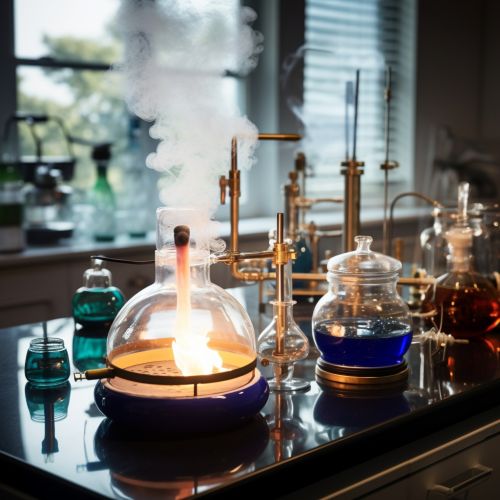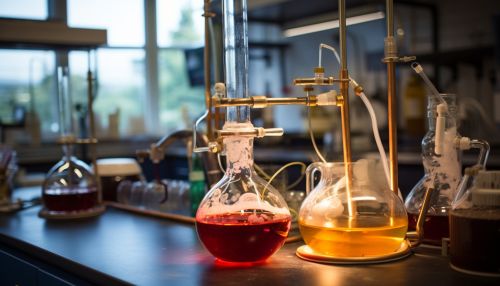Pyrolysis
Introduction
Pyrolysis is a thermochemical decomposition process of organic materials at elevated temperatures in an inert atmosphere. It involves the change of chemical composition and physical phase, and is irreversible. The word is coined from the Greek-derived elements pyro "fire" and lysis "separating".
Process
Pyrolysis is a type of thermolysis, and is most commonly observed in organic materials exposed to high temperatures. It is one of the processes involved in charring wood, starting at 200–300 °C (390–570 °F). It also occurs in fires where solid fuels are burning or when vegetation comes into contact with lava in volcanic eruptions. In general, pyrolysis of organic substances produces gas and liquid products and leaves a solid residue richer in carbon content, char. Extreme pyrolysis, which leaves mostly carbon as the residue, is called carbonization.


History
The process of pyrolysis has been used since ancient times. For instance, charcoal has been used since prehistoric times to create cave paintings. The word "pyrolysis" comes from the Greek words "pyro" and "lysis," which mean "fire" and "separation," respectively.
Types of Pyrolysis
Pyrolysis processes can be categorized as slow pyrolysis or fast pyrolysis.
Slow Pyrolysis
Traditionally, pyrolysis has been used to produce charcoal through slow, low-temperature processes (500–600 °C), with prolonged residence time. This type of pyrolysis produces a biochar with high carbon content (about 70%), and non-condensable gases and liquids, due to the decomposition of lignin.
Fast Pyrolysis
Fast pyrolysis yields 60% bio-oil and takes seconds for complete pyrolysis. In this process, biomass is rapidly heated to 450–600 °C for a few seconds. A liquid product, bio-oil (also known as pyrolysis oil or biocrude), is the primary material produced, along with various gases and a char residue.
Applications
Pyrolysis has many applications in food science, organic chemistry, and materials science.
Food Science
In food science, pyrolysis is used to analyze the composition of foods, particularly the Maillard reaction products. The Maillard reaction is a form of non-enzymatic browning involving an amino acid and a reducing sugar. The volatile compounds produced give foods their unique flavors, such as the roasty flavor in coffee.
Organic Chemistry
In organic chemistry, pyrolysis can be used to effect various chemical reactions. For instance, it is used in the production of ethylene, a key raw material in the chemical industry.
Materials Science
In materials science, pyrolysis is used in various processes to produce materials such as ceramics, carbon fiber, and silicon carbide.
Environmental Impact
Pyrolysis can be used to treat plastic waste, tires, and other carbonaceous materials. The process can convert these materials into valuable products, reducing their environmental impact. However, the process also produces gases that can contribute to global warming if not properly managed.
Future Prospects
The future of pyrolysis looks promising, with potential applications in renewable energy and waste management. Pyrolysis could play a significant role in producing biofuels and chemicals from biomass, reducing our reliance on fossil fuels.
